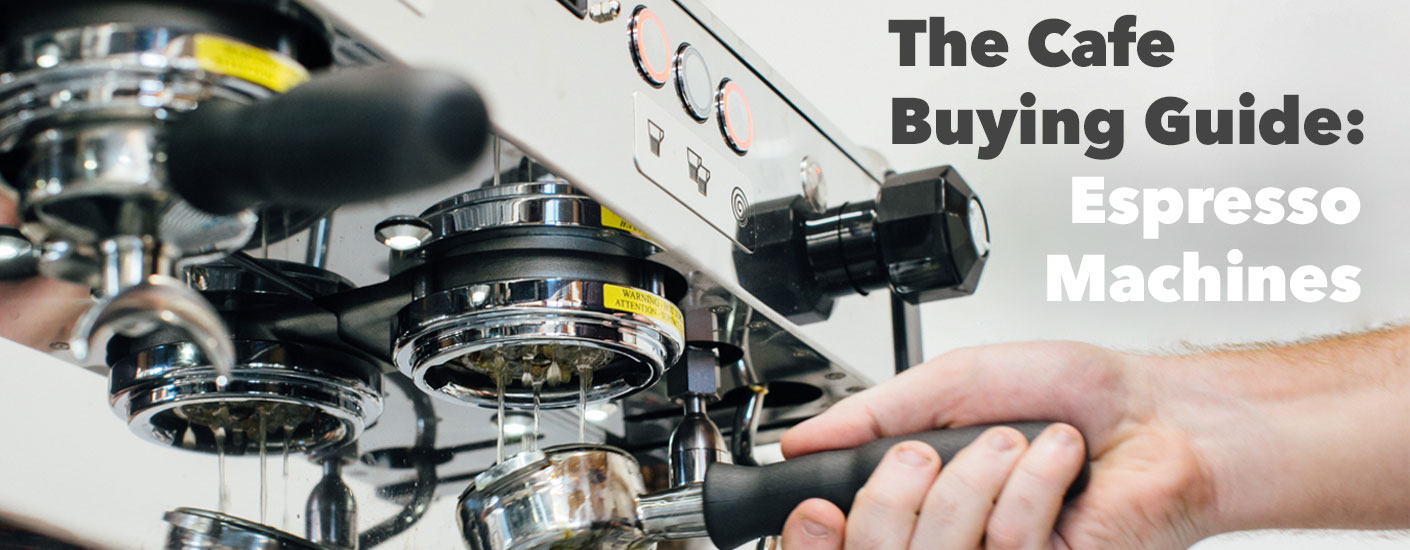As I savored the aroma of freshly brewed espresso, its velvety crema and robust flavors awakening my senses, I couldn’t help but reminisce about the challenges I once faced while navigating the complexities of an espresso machine. From grinding the beans to tamping the grounds, every step seemed like an art form requiring precision and finesse. But through a journey of experimentation and learning, I have mastered the techniques necessary to create the perfect shot at home. In this comprehensive guide, I will unravel the secrets of using an espresso machine, empowering you to enjoy the barista experience in the comfort of your own kitchen.

Image: prima-coffee.com
Deciphering the Anatomy of an Espresso Machine
Espresso machines, marvels of engineering, are composed of fundamental components that work in harmony to produce a concentrated coffee essence. Understanding these elements is the cornerstone of successful espresso-making: the group head dispenses the hot water that extracts flavors from the coffee grounds; the portafilter holds the grounds and locks into the group head; the pump generates the required pressure for extraction; the boiler heats water to the optimal temperature for brewing; and the steam wand, an optional feature, produces frothy steamed milk for cappuccinos and lattes.
Mastering the Art of Espresso Preparation
The art of crafting espresso lies in the meticulous execution of several key steps: grinding the beans sets the stage for even extraction, with medium-fine grounds producing the ideal flow rate and flavor profile; dosing the grounds entails filling the portafilter basket with the optimal amount of coffee, typically ranging from 18 to 22 grams for a double shot; tamping the grounds compresses them uniformly, creating a consistent resistance for the water’s passage; inserting the portafilter into the group head locks it securely, ensuring proper extraction; and extracting the espresso, the moment of truth, involves releasing hot water through the coffee grounds, yielding a rich, flavorful elixir.
The extraction process determines the quality of the espresso. A successful pull will produce a balanced beverage with the desired crema, viscosity, and taste. A thick, hazelnut-colored crema signifies a well-extracted shot, while a pale or thin crema may indicate under-extraction. The ideal extraction time ranges from 25 to 30 seconds, resulting in a concentrated yet harmonious flavor profile.
Exploring the Latest Espresso Machine Trends
The world of espresso machines continues to evolve, embracing advancements that enhance the user experience and quality of the final brew. Smart espresso machines, equipped with built-in grinders and precise temperature control, take the guesswork out of espresso-making, offering users a convenient and consistent experience. Automatic frothers simplify the process of creating silky, velvety milk foam, allowing aspiring baristas to create professional-quality cappuccinos and lattes in their home kitchens.
Sustainability has also become a driving force within the espresso machine industry, leading to the development of eco-friendly models featuring energy-efficient designs, recyclable materials, and ethical sourcing of coffee beans.

Image: www.mainenewsonline.com
Expert Tips for Making Exceptional Espresso
As an avid espresso enthusiast, I have spent countless hours experimenting and perfecting my technique. Allow me to share some expert tips that will elevate your home espressos to the next level:
- Use fresh, high-quality coffee beans that are specifically designed for espresso brewing. Freshly roasted beans will impart more vibrant flavors and aromas to your shots.
- Maintain a clean machine by regularly cleaning the group head, portafilter, and steam wand. This ensures that your espressos are free from unwanted flavors and bacteria.
- Experiment with different grind settings to find the optimal consistency for your specific machine and coffee beans. Too fine a grind can lead to over-extraction, while too coarse a grind can result in under-extraction.
- Tamp the grounds evenly and firmly using a tamper that fits your portafilter. An uneven tamp can lead to channeling, resulting in an inconsistent extraction.
Remember, practice makes perfect. With patience and dedication, you can master the art of making espresso and impress your friends and family with your barista skills.
Frequently Asked Questions about Espresso Machines
Here are some commonly asked questions about espresso machines, along with clear and concise answers:
- Q: What is the difference between an espresso machine and a regular coffee maker?
- A: Espresso machines use a high-pressure extraction process to produce a concentrated coffee beverage, while regular coffee makers use a drip or filter method that produces a milder brew.
- Q: How do I choose the right espresso machine for my needs?
- A: Consider factors such as your budget, desired features (e.g., built-in grinder, steam wand), and the number of espresso drinks you typically consume.
- Q: How often should I clean my espresso machine?
- A: It is recommended to clean the group head, portafilter, and steam wand daily, and to perform a full descaling process every 2-3 months.
Espresso Works Machine How To Use
Conclusion
Embarking on an espresso-making journey can be both rewarding and enjoyable. By understanding the components of an espresso machine, mastering the art of espresso preparation, leveraging the latest trends, and following expert tips, you can recreate the barista experience in your own home. Whether you are a seasoned coffee enthusiast or a novice exploring the world of espresso, I encourage you to delve into this rich and flavorful beverage. Remember, practice, patience, and a good cup of coffee make for a perfect combination.